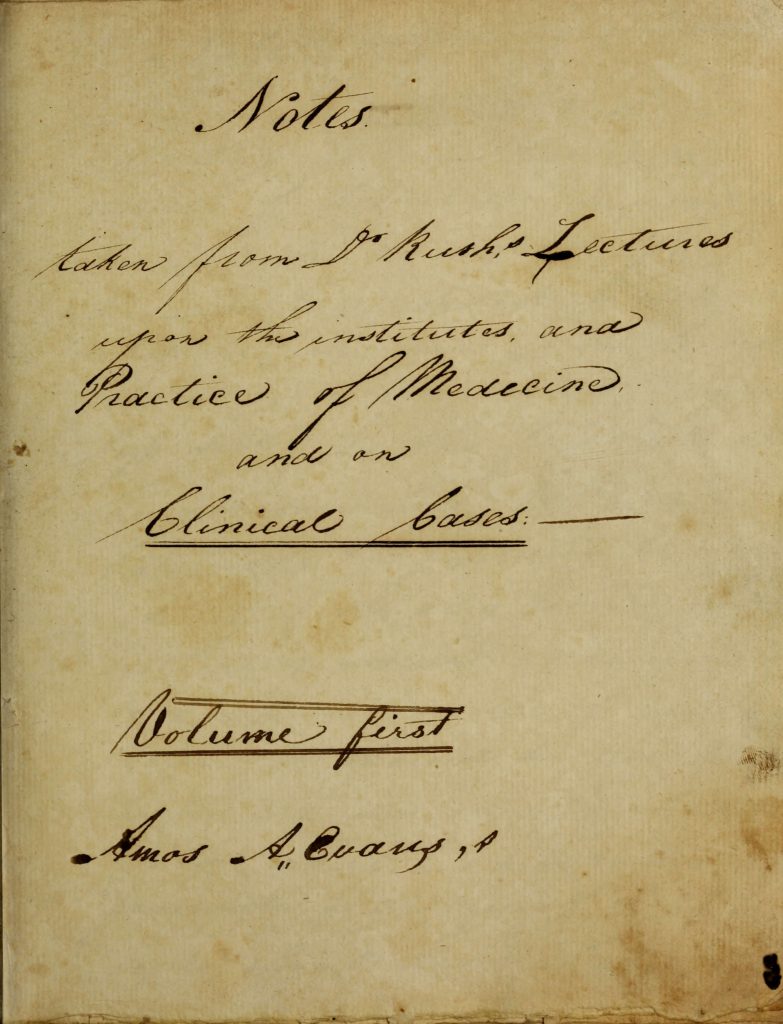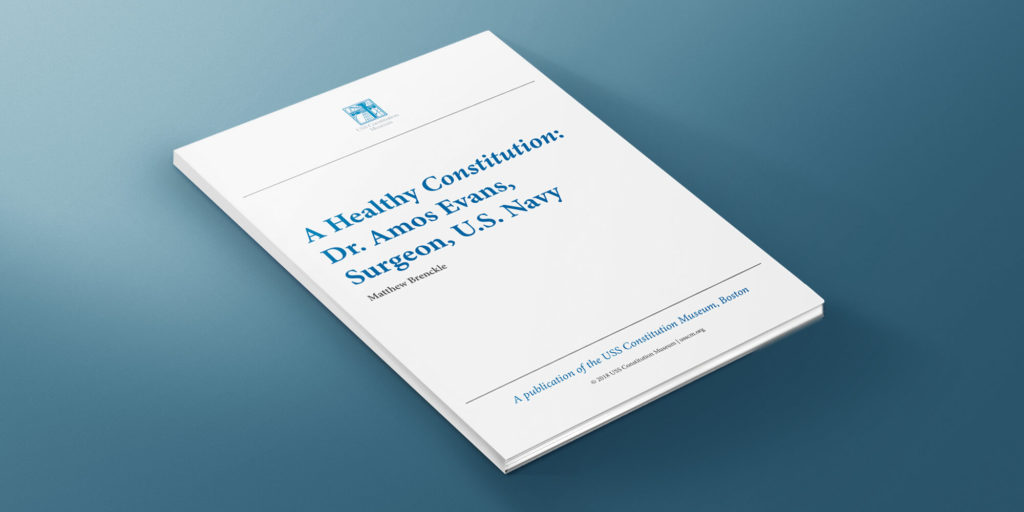Ship's Crew
Amos Alexander Evans
Rank(s): Surgeon
Dates of Service: 3/23/1812 - 3/6/1813
Birth Date: 11/26/1785
Death Date: 1/15/1848
Early Life
Amos Evans was born in Maryland on November 26, 1785 to John and Mary (Alexander) Evans, a wealthy and politically active family. As a young man he attended the Newark Academy in Delaware, after which he chose to train as a doctor.
Early Experience
As was typical for the time, Evans’ early medical training was as an apprentice, in his case with general practitioner Dr. George E. Mitchel from 1804 to 1806. He continued his studies with more formal training in Philadelphia where he spent two years attending lectures by well-regarded physicians Dr. Physick and Dr. Benjamin Rush. Dr. Rush was the most influential physician of his time and trained over 400 doctors.
In 1808, the U.S. Navy appointed Evans a surgeon’s mate, with his first assignment at the Marine Hospital in New Orleans. The following year he became a surgeon and later transferred to St. Mary’s in Georgia.
Evans joined Constitution as ship’s surgeon on March 23, 1812 and served on board for a year. His journal and prescription books from this time illuminate the day-to-day life of a ship’s surgeon. In addition to the ongoing crew illnesses of venereal diseases, scurvy, dysentery and infections, sailors often injured themselves from falls, accidents and drunkenness. The causes of illnesses and disease were unknown at the time and medical treatments were often useless and sometimes harmful. The descriptions in Dr. Evans’ prescription book detail the gruesome effects of injuries and illnesses in the early nineteenth century aboard ship and, to a modern reader, the perplexing treatments which included bleeding patients and the generous medicinal use of wine, even for patients for severe stomach ailments and vomiting.
As ship’s surgeon, Evans made $600 per year, plus the possibility of another $72 cash from forgoing extra rations.
Battles and Engagements
Evans treated the wounded from two of Constitution’s most famous battles in 1812, against HMS Guerriere and Java. Broken bones and injuries to arms and legs often required amputation.
The seven sailors wounded during the battle with Guerriere all recovered, including one amputation. Of the 22 crew members wounded in the battle against Java, seven died, include three of the four with leg fractures, who most likely had amputations.
In 1814, Evans attended Harvard University and earned a medical degree. The next year he was sent aboard USS Independence and was soon appointed, at age 29, as the navy’s first Surgeon of the Fleet. In this new position, Evans initiated several reforms. His focus on hygiene and sanitation recommended adequate food for the crew, including citrus, the regular boiling of crew bedding and clothing, and two washings per week instead of one. Evans had also seen first-hand the scourge of small pox aboard a ship and how it easily passed from ship to ship. He instituted a protocol by which all new crew members received medical exams and had to prove they already had small pox (and were now immune) or had been vaccinated.
Evans opened a private practice in 1817 in Elkton, Maryland, near his hometown. He resigned from the navy in 1824. Although friends encouraged him several times to run for Maryland’s governorship, he preferred the life of a small-town physician. Evans died on January 15, 1848 in Elkton. He was survived by his children and widow Mary, who never remarried.
Crew ID
4014

